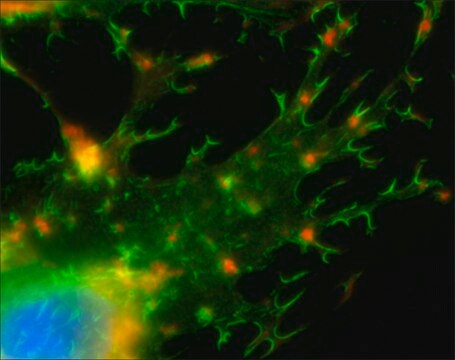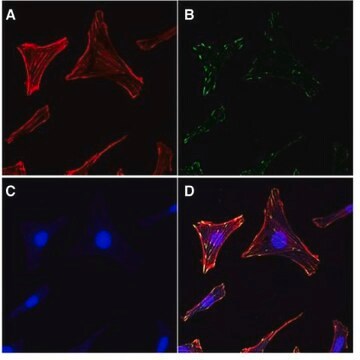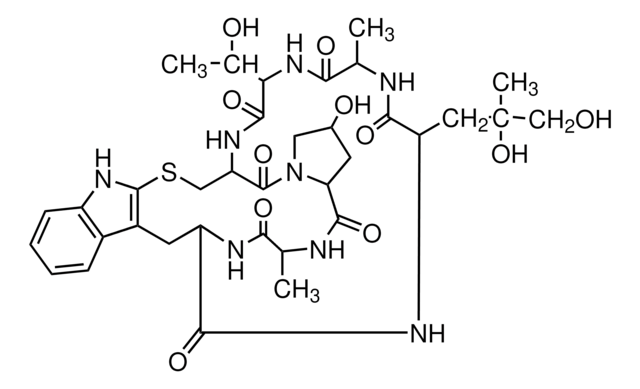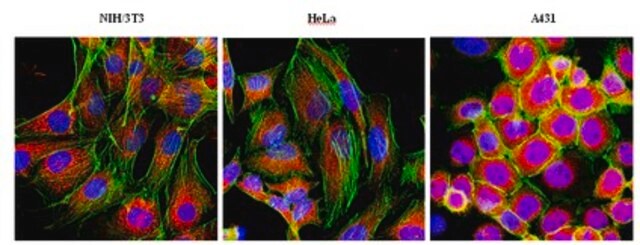P5282
Phalloidin Peptide
≥90% (HPLC), solid, FITC labeled
Sinónimos:
Phalloidin-FITC
About This Item
Productos recomendados
Nombre del producto
Phalloidin, Fluorescein Isothiocyanate Labeled, sequence Amanita phalloides(synthetic: peptide sequence)
biological source
sequence from Amanita phalloides (synthetic: peptide sequence)
Quality Level
form
solid
fluorescence
λex 495 nm; λem 520 nm(lit.)
storage temp.
−20°C
General description
Application
- To visualize F-Actin reorganization in primary neonatal cardiomyocytes (PNCMs) and H9C2 cells (rat cardiac myoblasts) following endothelin-1 (ET-1) and angiotensin II (Ang II) treatment.
- In immunochemistry to label microfilament.
- In immunofluorescence analysis to stain F-actin.
Biochem/physiol Actions
signalword
Danger
hcodes
Hazard Classifications
Acute Tox. 2 Dermal - Acute Tox. 2 Inhalation - Acute Tox. 2 Oral
Storage Class
6.1A - Combustible acute toxic Cat. 1 and 2 / very toxic hazardous materials
wgk_germany
WGK 3
flash_point_f
Not applicable
flash_point_c
Not applicable
Elija entre una de las versiones más recientes:
¿Ya tiene este producto?
Encuentre la documentación para los productos que ha comprado recientemente en la Biblioteca de documentos.
Los clientes también vieron
Contenido relacionado
Three-dimensional (3D) printing of biological tissue is rapidly becoming an integral part of tissue engineering.
Nuestro equipo de científicos tiene experiencia en todas las áreas de investigación: Ciencias de la vida, Ciencia de los materiales, Síntesis química, Cromatografía, Analítica y muchas otras.
Póngase en contacto con el Servicio técnico








